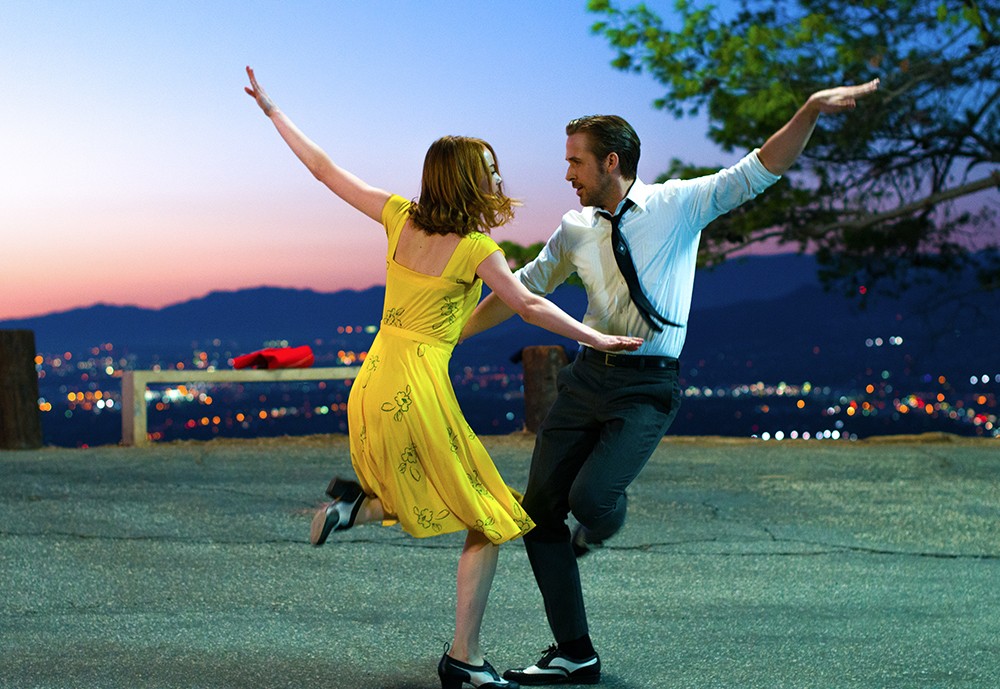La La Land
La La Land, 2016, 4 ¼ stars
Modern musical meets the past
La La Land blends innovation with Hollywood nostalgia
From The Orlando Weekly, December 14, 2016
“Everything old is new again,” Peter Allen wrote (and sang). But if he had seen La La Land, he might have omitted the word “again,” for never have the glory days of Hollywood been re-imagined quite like they are in the new film by writer-director Damien Chazelle.
La La Land is part musical-fantasy, part romantic dramedy and part homage to such classics as Singin’ in the Rain, Rebel without a Cause and An American in Paris, but it’s also the tale of two very real people with very real, 21st-century L.A. problems. Sebastian (Ryan Gosling) is a jazz pianist stuck banging out Christmas ditties to unappreciative gourmands while longing to open his own club and revive an art form that’s more endangered than Southern Californian modesty. In short, he longs for real.
Into his life meanders Mia (Emma Stone), another frustrated California dreamer who works as a Warner Brothers Studio backlot barista by day and receives rejections from casting directors by twilight. That they meet and fall in love is not so much real-life serendipity as beautiful contrivance. And, at least for the first act, it’s all bee’s knees – with tunes! But then the music fades, figuratively and literally, and our love birds fly straight into the face of reality – and modernity – as they must choose between their relationship and their careers.
In his last film, Whiplash, Chazelle used music as punctuation, but in this one, he promotes it to conjugation. La La Land opens with “Another Day of Sun,” in which hundreds of drivers stuck in a real (little if any CGI) traffic jam celebrate, in song, arguably the two most iconic Los Angeles attributes: ever-present sunshine and never-ending freeway gridlock. Other musical numbers follow, some as memorable (“City of Stars” and “The Fools Who Dream”), some not (the slightly too cute “A Lovely Night”), until the second half when, frankly, the film turns a bit dull, has trouble juggling genres and is burdened with poor pacing and a subplot involving Sebastian’s musical partnership with his friend Keith (an out-of-place John Legend). But by that time, the film has built up enough charm to coast its way toward one of the best endings of the decade: a jaw-dropping, metatheatrical collage of music, art, dance and emotional longing that would have made even Gene Kelly jealous.
Gosling and Stone have predictably wonderful chemistry. This is, after all, their third film together. They also have decent-enough voices to make one forget that Justin Hurwitz’s music is substantially inferior to the classic musicals the film references. But when dazzled by the film’s originality and happily blinded by its hues of blues, reds and yellows, my primary color was not disappointment, but delight.
Explaining the fractured psyche of their city, Sebastian tells Mia, “That’s L.A.: They worship everything, and they value nothing.” That’s not true for La La Land, though, which worships and values – and even loves – Hollywood, flaws and all. And despite the movie’s shortcomings, that love is infectious enough to land La La on the list of top 10 movies of the year.
© 2016 Orlando Weekly / MeierMovies, LLC
